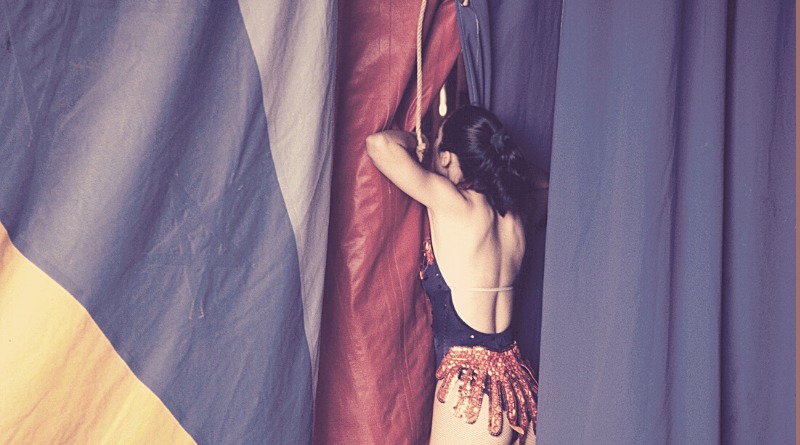Circus History Through Photographs: Dawn V. Rogala at the 2022 CHS Convention
At this year’s annual Circus Historical Society convention, writer and circus scholar Aine Norris got to speak with photographer and Smithsonian conservator Dawn V. Rogala, whose work has highlighted the journeys and the culture of big-name American circuses throughout the 1990s. Rogala shares about her craft, and the essentials of documenting circus history.

In late July, theCircus Historical Society (CHS) held its annual Convention near Bridgeport, Connecticut, home of the Barnum Museum and other historic circus sites. The Convention agenda featured presentations by leading international circus professionals, historians, and authors, in addition to auctions, excursions, and other social events.
The event was a success, bringing together over 80 registrants, including Dr. Dawn V. Rogala, winner of the 2021 Stuart Thayer Prize for her book When the Circus Came to Town! An American Tradition in Photographs. Rogala, a conservator and program manager at the Smithsonian Institution’s Museum Conservation Institute, published her book in 2020, and her presentation at the Convention included images and stories from her time traveling with eleven different shows in the 1990s.
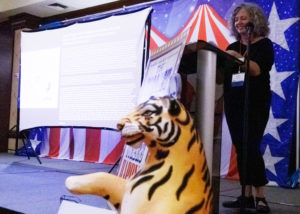
I sat down with Rogala to talk the Convention, her book, and what she sees for the future of circus studies. This was Rogala’s first time at a CHS Convention, and during the multi-day event, one could spot her as a presenter, a captivated attendee, and talking circus at the author tables while selling and signing copies of her book.
When asked about her impression of the Convention, Rogala was most captivated by the array of attendees. “They are all keeping circus history alive,” she stated. “They’re breathing new life into this tradition and carrying it forward,” whether through scholarship, storytelling, generational or professional connections, or fandom.
This diverse mix of attendees was reflected in attendance in Bridgeport and online via Zoom; the colorful ribbons on name badges included descriptors ranging from Presenter and First of May to special ribbons announcing distinctions for Trouper—presented to those celebrating 60-plus years as CHS members, and Equestrian Director—for those celebrating 50-59 years of membership.
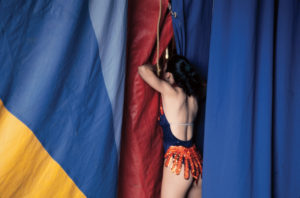
Rogala, however, is no First of May. Between 1992 to 1998, she photographed the daily life of many of America’s tented circuses, including the Big Apple Circus, Vidbel’s Olde Tyme Circus, Franzen Brothers Circus, Roberts Bros. Circus, Carson & Barnes Circus, Clyde Beatty-Cole Bros. Circus, Kelly Miller Circus, Walker Bros. Circus, Culpepper & Merriweather Circus, Circus Vargas, and Sterling & Reid Bros. Circus.
During her time photographing shows, Rogala avoided staged shots and focused instead on expressing the warmth and energy of the lots, often gravitating toward the crews, animal care, and other manifestations of day-to-day life on the road. “I wanted other people to see what was there, what was happening at these shows,” she said. “The photos ultimately help people look outside their own bubble of time and experience something that might be new or different to them.”
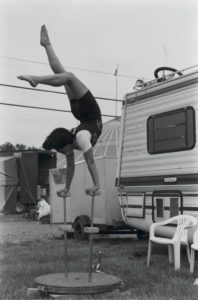
When asked about the process for her book, a collection of photos selected from the 10,000-plus images taken from her travels called When the Circus Came to Town! An American Tradition in Photographs, Rogala laughed and said initially there was no plan for a book. “Then one night, while talking with some of the crew, I had an out-of-body experience … I suddenly heard myself saying I wanted to put together a book, and that was the beginning of the project.” It took her almost twenty years to make the book a reality. “I realized this collection was truly an archive,” she said of her accumulated images, interviews, and ephemera from the shows. “Everyone trusted in me. It was time.”
On the opening day of the 2017 Smithsonian Folklife Festival—the festival’s 50th anniversary, which included a focus on circus arts—Rogala gifted her archival materials to the Archives Center at the National Museum of American History. (The museum was granted reproduction rights, although Rogala retains copyright of her photos; the Smithsonian is granted copyright in her will.) The collection is officially named the Dawn V. Rogala Circus Photographs and Papers. “Ultimately,” said Rogala, “the collection ended up in exactly the right place.”
Rogala, a Smithsonian employee, coordinated with three different parts of the institution on the gift. In addition to the collection at the Archives Center, a portfolio of prints was also gifted to the museum’s Photographic History Collection; the Folklife Festival included Rogala’s work in their promotional materials and signage, and invited her to participate in a panel discussion about documenting the circus in photo and film; and Rogala worked with museum curators and editors at the Smithsonian Institution Scholarly Press on a full-color book that includes 245 plates, as well as essays by David Haberstich, photo curator at the Archives Center, and Shannon Perich, curator of the Photographic History Collection, alongside Rogala’s own essay about her experience traveling with the circus as a young photographer. “It all came together,” Rogala said, “the photos and the book… the right place, the right time, and the best people.”
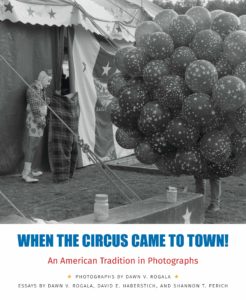
Rogala’s style, categorized as documentary photography, shines throughout the book. “You saw this style a lot in the 50s and 60s, with photographers for LIFE and Look magazines getting paid to show what life was like for different groups of people,” said Rogala. “But those jobs dried up. When there was a resurgence of documentary photography in the 80s, no one had any money. People photographed their own lives, or lived with the people they wanted to photograph, because they couldn’t afford to do it any other way. I was aware of 80s photography when I started my project, but I didn’t know where it came from. I didn’t have any real training and didn’t consider myself a professional photographer. I didn’t realize I was part of that tradition until looking back, years later, on my time with circuses.”
Rogala’s book features both black and white and color photographs, each image carrying the reader through a subtle but purposeful chronology crafted by curators. “The curators (Perich and Haberstich) made the initial selection,” she said, “because I was too close to the subject matter and they knew what would resonate with viewers.”
Initially, she attended the photo selection meetings to answer questions the curators had about the circus or about individual photos, but once the initial selection was made, Rogala was more hands-on. “There were certain photos that I wanted in the book, come hell or high water,” she laughed. “The photos are mine, of course, but the book works because we worked together on it.” Rogala primarily captured her work using black and white, which emphasized details, but sometimes returned to her trailer to switch to color film because the colors on the lot were unbelievably vibrant. This mix of color, carefully woven alongside black and white images in the book, enhances the spirit of the collection and creates a distinctive experience for readers.

Sitting at the CHS Convention, talking with Rogala about her time with circuses in the 90s, it was imperative to me to discuss the place of circus in history and American culture, and why it is important to so many people. “I see the stories as traditional, even generational,” said Rogala. “Circus is undeniably baked into America, and I think right now is when we will begin to understand, to see its larger place in history. What we see here [at the Convention] and in all the other projects and shows that are coming out about the circus, is the hard work, the day-to-day life, the talent, and the relationships.” Ultimately, Rogala’s images show what life was like for the people who made circus so special.
When I look at Rogala’s photos, it’s apparent that she documented an important facet of American life and culture at a time when much of the photography on record focused on politics or the music scene. To me, it is her unpresuming, creative immersion in circus life that radiates through the photographs.
Rogala’s photo collection reflects and preserves circus as a piece of America’s cultural heritage, in line with the CHS mission to preserve the rich history of circus. As we finished the interview, Convention attendees began boarding a bus to visit the Barnum Museum, the former winter quarters, and the gravesites of P.T. Barnum and Tom Thumb, chatting together with the palpable excitement, joy, and camaraderie Rogala captured on film all those years ago.

Do you have a story to share? Submit your news story, article or press release.

